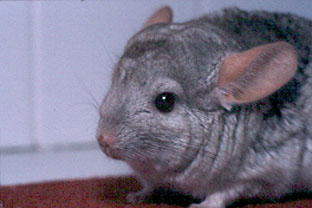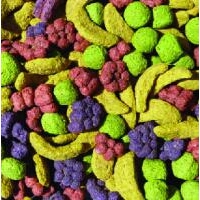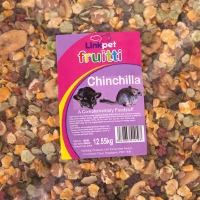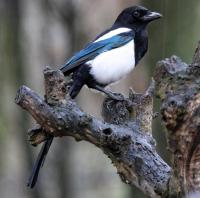- Home
- FAQs
- Customer Video Gallery
- Customer Photo Gallery
- Bird Facts
- Bird Food Blog
- Bird Information
- Feeding Advice
- Small Animal Information
- A to Z of Guinea Pigs
- A to Z of Hamsters
- A to Z of Rabbits
- Basic Care for Guinea Pigs
- Basic Care for Hamsters
- Basic Care for Rabbits
- Basic care for Chinchillas
- Basic care for Ferrets
- Basic care for Gerbils
- Basic care for Mice
- Basic care for Rats
- Buying a Healthy Small Animal
- Does your Reptile need a Licence
- Equipment for Ferrets
- Equipment for Hamsters
- Equipment for Mice
- Equipment for your Chinchilla
- Equipment for your Gerbil
- Equipment for your Guinea Pig
- Equipment for your Rabbit
- Keeping a House Rabbit
- Dog Information
- Cat Information
- Customer Information
- Fat Balls
- Suet Pellets
- Straights
- Seed Mixes
- Suet Treats
- Mealworms
- Bird Feeders
- My Account
Basic care for Chinchillas
With their luxurious coats, inquisitive and placid nature, chinchillas make excellent pets for older children and adults.
Basic care for chinchillas includes general information on feeding, housing, bedding, grooming, health, exercise and useful equipment. Plus fascinating facts about this intriguing small animal.
Twootz provides Fruity Chinchilla Food and Small Animal fruity mix which are both ideal for your Chinchillas health and well being.
In their natural environment, chinchillas live in communities in deep burrows among loose rocks. Hailing from the Andes regions of South America (Chile, Bolivia and Peru), chinchillas are mountain-dwelling rodents who cope with the extremes of cold their high altitude habitat endures thanks to their soft, dense fur. In fact it was for their beautiful coats that they were hunted for hundreds of years by Peruvian natives, and later extensively bred in captivity, particularly in Canada and parts of Europe too. These days they are bred for domestication as exotic pets, the fur trade having more or less fizzled out.
Once tame, chinchillas can become affectionate pets, but you must take into account that they are nocturnal creatures so will be more tolerant of you handling them in the evening. Timid by nature, chinchillas do not appreciate over-handling and, like cats, are independent, only putting up with cuddles when they want to. Over-handling may cause them to shed their fur through stress.
Male chinchillas tend to be more affectionate than females, so people who only want one pet would be better off choosing a chap. Being social creatures, chinchillas appreciate company: two male siblings will rub along fine once they reach maturity and provide company for each other, as will two females. A male and a female kept together will breed, but you can avoid this by having the male castrated.
Housing and bedding:
Domesticated chinchillas thrive better indoors in a dry, temperature-controlled environment. Although they can cope with cold, chinchillas suffer in damp, draughty conditions and also if the temperature rises over 20C.
As they are active little creatures who love to run about and jump, chinchillas need secure accommodation large enough for them to exercise and play. The minimum recommended cage size to house one chinchilla is 100cms long x 90cms wide x 90cms high, but the bigger and higher the cage the better (particularly if it’s only one level) for your chinchilla’s health and happiness. Many pet stores, especially those that sell chinchillas, stock a selection of purpose-built cages so shop around to find the ideal home for your pet.
Chinchilla cages are constructed from wire mesh to prevent them chewing their way out and escaping. A wire mesh floor allows urine and faeces to drop down into a plastic litter tray (which you can line, if required, with unscented cat litter or newspaper) under the cage, helping to prevent contamination of your pet’s velvety fur.
Ensure that the cage’s mesh squares are no larger than 13mm (half an inch) wide otherwise your pet may get his feet trapped and suffer injury. It is recommended that you part-line line the floor and any cage tiers with untreated white pine boarding to avoid this happening (keep spare boards in reserve as they are soon chewed).
Ideally the cage should have two or more tiers, with feed bowls and a gravity-feed water bottle kept on the ground floor. The more levels the better as chinchillas love to climb and explore, both of which are essential activities for physical and mental exercise.
Provide your chinchilla with a nesting-box in which he can hide and rest in private when he wants. If his cage has tiers, place the box on the second level of a tiered cage and line it with suitable bedding material such as hay.
Litter trays require cleaning out once or twice per week. Use a pet disinfectant to thoroughly wash litter trays and equipment every week.
Tip: Place your pet’s cage in a quiet room so that his sleep is not disturbed during the day. Ensure his cage is away from direct sources of heat such as radiators and sun-lit windowsills.
Grooming:
Your chinchilla will require a dust bath in his cage filled with volcanic ash or activated clay (both available from pet shops and sold as ‘chinchilla dust’). You can also use fuller’s earth (clay dust). A dust bath is a vital piece of equipment, as daily ‘bathing’ absorbs oil from his coat and maintains it in top condition. Clean out his dust bath and top up with fresh volcanic ash once a week.
Chinchillas are fastidious about their personal cleanliness and hygiene so you do not need to groom your pet in order to keep his coat in pristine order. However, a spot of gentle, regular brushing with a soft-bristled brush or small comb won’t hurt him and may improve the bonding process between you both.
Tip: Offer your chinchilla access to his dust bath for a short period each day, say 15 minutes. This way you can be sure he is using it to keep his coat in pristine condition and it will provide some entertainment for you, seeing him roll!
Tip: Use a metal dust bath to prevent your chinchilla from chewing it to bits.
Tip: Never use water to bath your chinchilla. It is unnecessary (unless your vet directs it for a particular reason) and will distress your pet as chinchillas dislike water on their fur.
Feeding:
In their natural habitat, chinchillas feed in the early morning and at sunset on their staple diet of grass and roots. Domesticated chinchillas are usually fed on a diet of commercially prepared chinchilla pellets or mixes. Whichever you decide, follow the manufacturer’s feeding recommendation to ensure that you do not over-feed your pet. You will also need to provide fresh, clean hay daily (choose fine, sweet-smelling timothy hay, rather than the coarser hay as fed to horses and cattle) to satisfy his fibre requirement.
Fresh fruit and vegetables are thoroughly enjoyed by chinchillas and may be offered as a daily treat. They also love raisins, sultanas and dried bread, and are partial to freshly picked dandelions too. All fresh food should be washed thoroughly to remove dirt and traces of insecticides.
Tip: Hang carrots, apples, etc from pieces of string in your chinchilla’s cage to help prevent boredom.
Exercise:
As well as having a good roll in his dust bath, your chinchilla will appreciate flowerpots, boxes and branches placed in his cage to provide mental and physical exercise. Safe woods include apple, hazel and willow, plus untreated white pine wooden blocks, dowelling or rails. Move your pet’s toys around his cage regularly to help prevent him from becoming bored.
As chinchillas need more space to play and run around than their cages really permit, let them scamper out daily in a safe room for an hour or so, with a selection of toys to investigate and amuse themselves with. Bear in mind that they will chew anything they can get their teeth into so keep an eagle eye on your pet(s) when around furniture and electrical cables!
Chinchillas drown easily, as the weight of their sodden, dense fur drags them down quickly, so don’t let them out in rooms where there are water hazards, e.g. a dog’s water bowl, aquarium or toilet.
Fast movers and jumpers, chinchillas can be tricky to catch when let loose on the ground. You’ll need to be quick to collar your pet, but you must also be extremely careful in getting hold of him as he is delicately built. Never grab at his body as you may distress or damage your chinchilla; grab the base of his tail (never the end of it) instead and then pick him up gently, supporting under his head and chest with one hand and still holding the tail base with the other.
Tip: Hide your chinchilla’s favourite treats in his toys to make him work for his food. This exercise is good for both mental and physical exertion.
Health:
Cared for correctly, chinchillas suffer few health problems and once you become accustomed to your pet’s habits, likes, dislikes and behaviour pattern, you’ll immediately recognise when he’s off-colour. Adopt the habit of checking him every day for any signs of illness or injury.
Like all rodents, chinchillas have continually growing teeth, which normally wear down through chewing. However, some chinchillas suffer from overgrown teeth (malocclusions), which can be extremely painful. If the animal did not gnaw to keep them in good condition and at the right length, a chinchilla’s teeth would grow up to two or three times his body length in one year!
Chinchillas may also suffer from fur chewing, a behavioural disease which is characterised by the chinchilla chewing fur on his sides, revealing bald patches. The causes of this can be multiple, including environmental stress, chewing from another chinchilla or boredom. Ensure that your chinchilla always has plenty of hay to chew, toys to play with, enough exercise space and daily attention from you.
Basic care for chinchillas includes general information on feeding, housing, bedding, grooming, health, exercise and useful equipment. Plus fascinating facts about this intriguing small animal.
Twootz provides Fruity Chinchilla Food and Small Animal fruity mix which are both ideal for your Chinchillas health and well being.

In their natural environment, chinchillas live in communities in deep burrows among loose rocks. Hailing from the Andes regions of South America (Chile, Bolivia and Peru), chinchillas are mountain-dwelling rodents who cope with the extremes of cold their high altitude habitat endures thanks to their soft, dense fur. In fact it was for their beautiful coats that they were hunted for hundreds of years by Peruvian natives, and later extensively bred in captivity, particularly in Canada and parts of Europe too. These days they are bred for domestication as exotic pets, the fur trade having more or less fizzled out.
Once tame, chinchillas can become affectionate pets, but you must take into account that they are nocturnal creatures so will be more tolerant of you handling them in the evening. Timid by nature, chinchillas do not appreciate over-handling and, like cats, are independent, only putting up with cuddles when they want to. Over-handling may cause them to shed their fur through stress.
Male chinchillas tend to be more affectionate than females, so people who only want one pet would be better off choosing a chap. Being social creatures, chinchillas appreciate company: two male siblings will rub along fine once they reach maturity and provide company for each other, as will two females. A male and a female kept together will breed, but you can avoid this by having the male castrated.
Housing and bedding:
Domesticated chinchillas thrive better indoors in a dry, temperature-controlled environment. Although they can cope with cold, chinchillas suffer in damp, draughty conditions and also if the temperature rises over 20C.
As they are active little creatures who love to run about and jump, chinchillas need secure accommodation large enough for them to exercise and play. The minimum recommended cage size to house one chinchilla is 100cms long x 90cms wide x 90cms high, but the bigger and higher the cage the better (particularly if it’s only one level) for your chinchilla’s health and happiness. Many pet stores, especially those that sell chinchillas, stock a selection of purpose-built cages so shop around to find the ideal home for your pet.
Chinchilla cages are constructed from wire mesh to prevent them chewing their way out and escaping. A wire mesh floor allows urine and faeces to drop down into a plastic litter tray (which you can line, if required, with unscented cat litter or newspaper) under the cage, helping to prevent contamination of your pet’s velvety fur.
Ensure that the cage’s mesh squares are no larger than 13mm (half an inch) wide otherwise your pet may get his feet trapped and suffer injury. It is recommended that you part-line line the floor and any cage tiers with untreated white pine boarding to avoid this happening (keep spare boards in reserve as they are soon chewed).
Ideally the cage should have two or more tiers, with feed bowls and a gravity-feed water bottle kept on the ground floor. The more levels the better as chinchillas love to climb and explore, both of which are essential activities for physical and mental exercise.
Provide your chinchilla with a nesting-box in which he can hide and rest in private when he wants. If his cage has tiers, place the box on the second level of a tiered cage and line it with suitable bedding material such as hay.
Litter trays require cleaning out once or twice per week. Use a pet disinfectant to thoroughly wash litter trays and equipment every week.
Tip: Place your pet’s cage in a quiet room so that his sleep is not disturbed during the day. Ensure his cage is away from direct sources of heat such as radiators and sun-lit windowsills.
Grooming:
Your chinchilla will require a dust bath in his cage filled with volcanic ash or activated clay (both available from pet shops and sold as ‘chinchilla dust’). You can also use fuller’s earth (clay dust). A dust bath is a vital piece of equipment, as daily ‘bathing’ absorbs oil from his coat and maintains it in top condition. Clean out his dust bath and top up with fresh volcanic ash once a week.
Chinchillas are fastidious about their personal cleanliness and hygiene so you do not need to groom your pet in order to keep his coat in pristine order. However, a spot of gentle, regular brushing with a soft-bristled brush or small comb won’t hurt him and may improve the bonding process between you both.
Tip: Offer your chinchilla access to his dust bath for a short period each day, say 15 minutes. This way you can be sure he is using it to keep his coat in pristine condition and it will provide some entertainment for you, seeing him roll!
Tip: Use a metal dust bath to prevent your chinchilla from chewing it to bits.
Tip: Never use water to bath your chinchilla. It is unnecessary (unless your vet directs it for a particular reason) and will distress your pet as chinchillas dislike water on their fur.
Feeding:
In their natural habitat, chinchillas feed in the early morning and at sunset on their staple diet of grass and roots. Domesticated chinchillas are usually fed on a diet of commercially prepared chinchilla pellets or mixes. Whichever you decide, follow the manufacturer’s feeding recommendation to ensure that you do not over-feed your pet. You will also need to provide fresh, clean hay daily (choose fine, sweet-smelling timothy hay, rather than the coarser hay as fed to horses and cattle) to satisfy his fibre requirement.
Fresh fruit and vegetables are thoroughly enjoyed by chinchillas and may be offered as a daily treat. They also love raisins, sultanas and dried bread, and are partial to freshly picked dandelions too. All fresh food should be washed thoroughly to remove dirt and traces of insecticides.
Tip: Hang carrots, apples, etc from pieces of string in your chinchilla’s cage to help prevent boredom.
Exercise:
As well as having a good roll in his dust bath, your chinchilla will appreciate flowerpots, boxes and branches placed in his cage to provide mental and physical exercise. Safe woods include apple, hazel and willow, plus untreated white pine wooden blocks, dowelling or rails. Move your pet’s toys around his cage regularly to help prevent him from becoming bored.
As chinchillas need more space to play and run around than their cages really permit, let them scamper out daily in a safe room for an hour or so, with a selection of toys to investigate and amuse themselves with. Bear in mind that they will chew anything they can get their teeth into so keep an eagle eye on your pet(s) when around furniture and electrical cables!
Chinchillas drown easily, as the weight of their sodden, dense fur drags them down quickly, so don’t let them out in rooms where there are water hazards, e.g. a dog’s water bowl, aquarium or toilet.
Fast movers and jumpers, chinchillas can be tricky to catch when let loose on the ground. You’ll need to be quick to collar your pet, but you must also be extremely careful in getting hold of him as he is delicately built. Never grab at his body as you may distress or damage your chinchilla; grab the base of his tail (never the end of it) instead and then pick him up gently, supporting under his head and chest with one hand and still holding the tail base with the other.
Tip: Hide your chinchilla’s favourite treats in his toys to make him work for his food. This exercise is good for both mental and physical exertion.
Health:
Cared for correctly, chinchillas suffer few health problems and once you become accustomed to your pet’s habits, likes, dislikes and behaviour pattern, you’ll immediately recognise when he’s off-colour. Adopt the habit of checking him every day for any signs of illness or injury.
Like all rodents, chinchillas have continually growing teeth, which normally wear down through chewing. However, some chinchillas suffer from overgrown teeth (malocclusions), which can be extremely painful. If the animal did not gnaw to keep them in good condition and at the right length, a chinchilla’s teeth would grow up to two or three times his body length in one year!
Chinchillas may also suffer from fur chewing, a behavioural disease which is characterised by the chinchilla chewing fur on his sides, revealing bald patches. The causes of this can be multiple, including environmental stress, chewing from another chinchilla or boredom. Ensure that your chinchilla always has plenty of hay to chew, toys to play with, enough exercise space and daily attention from you.








